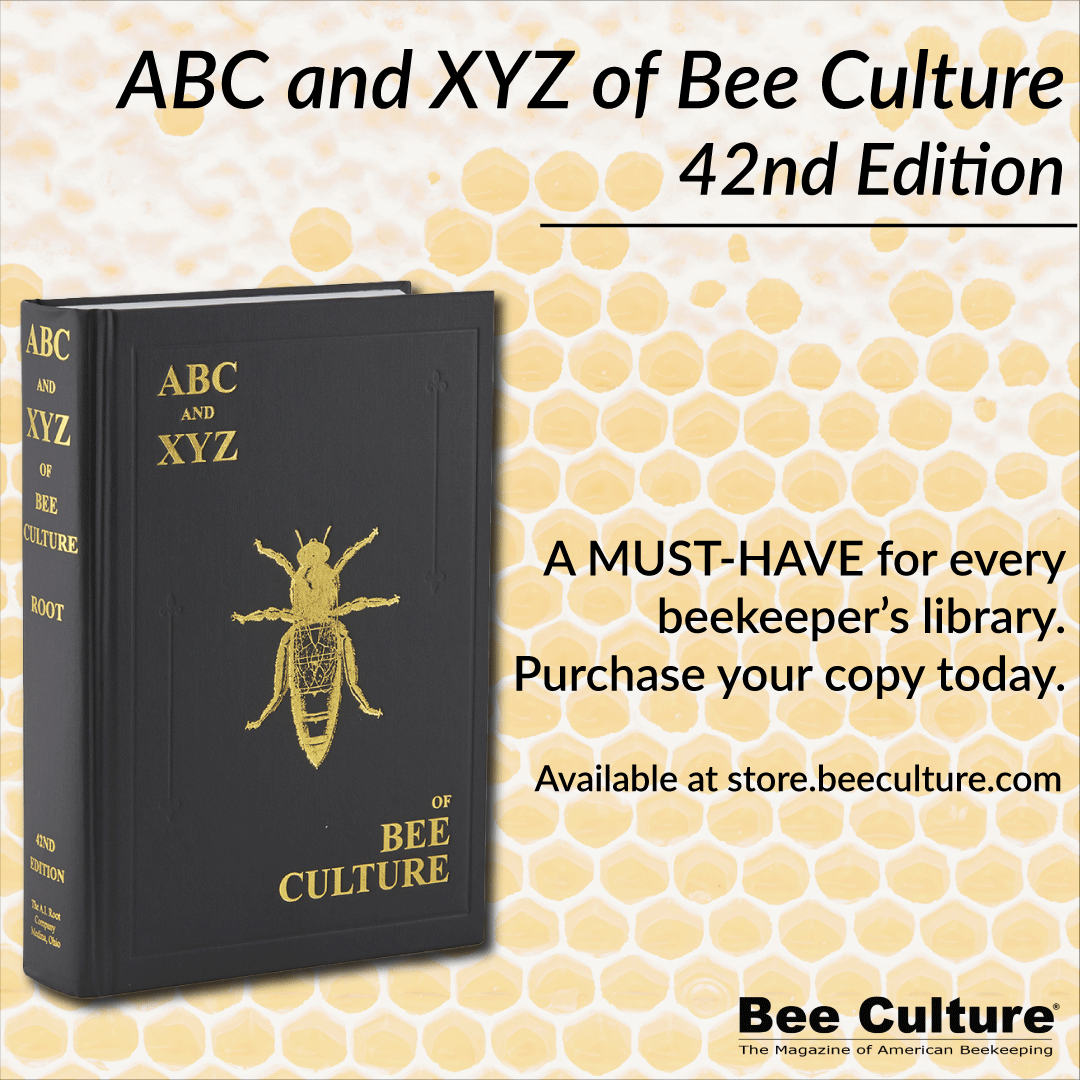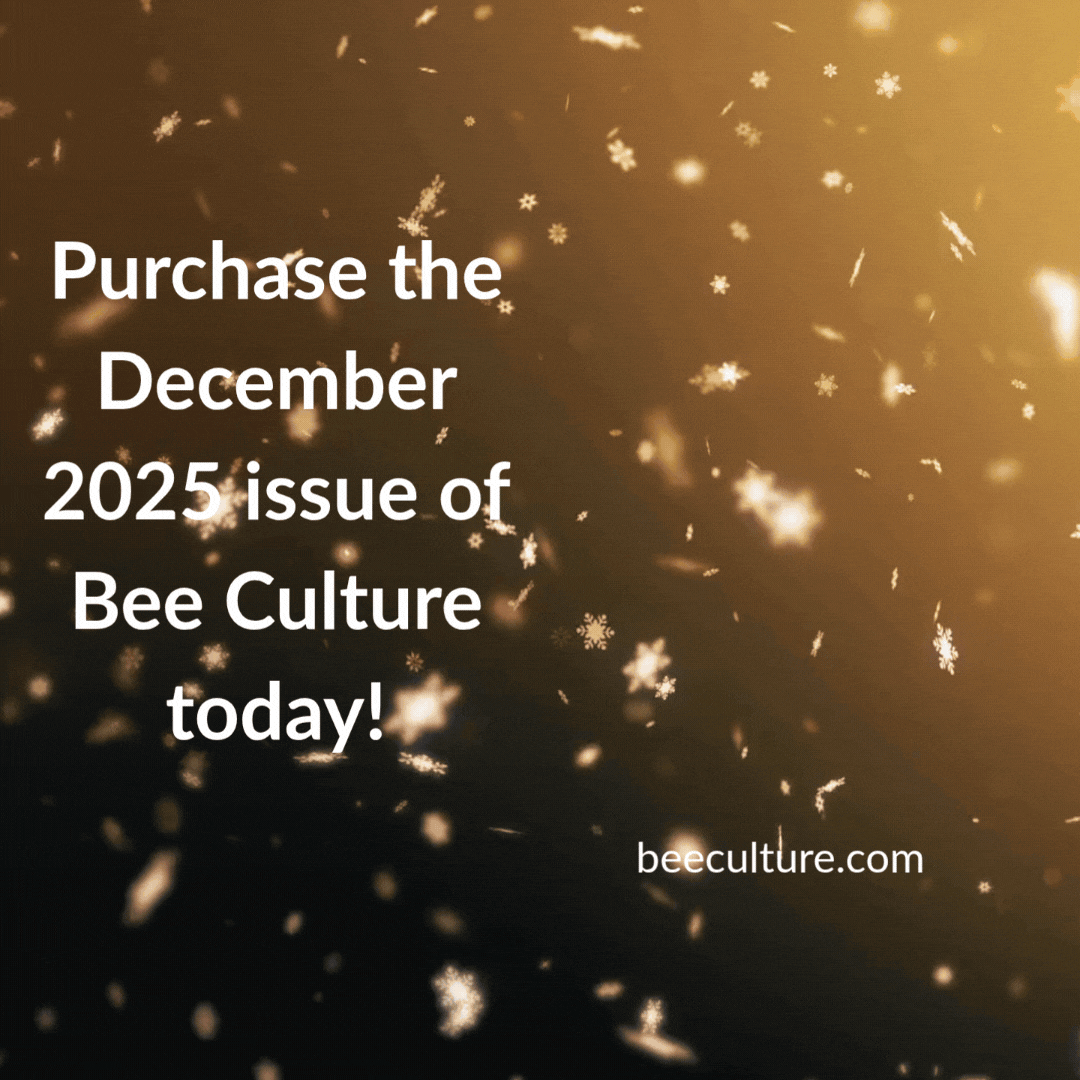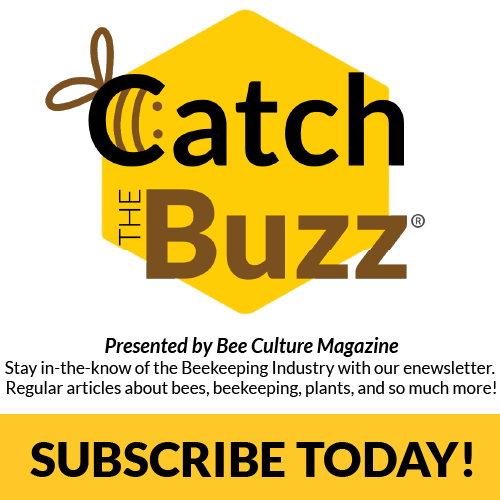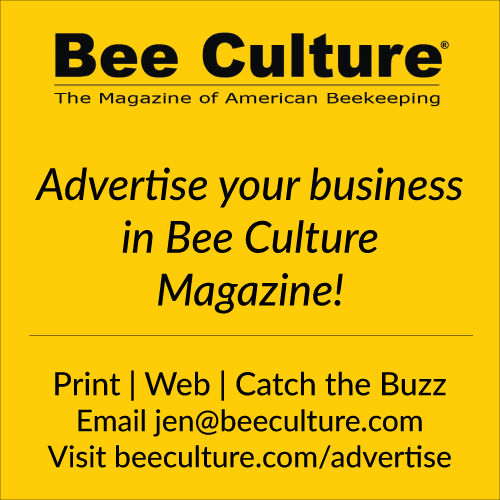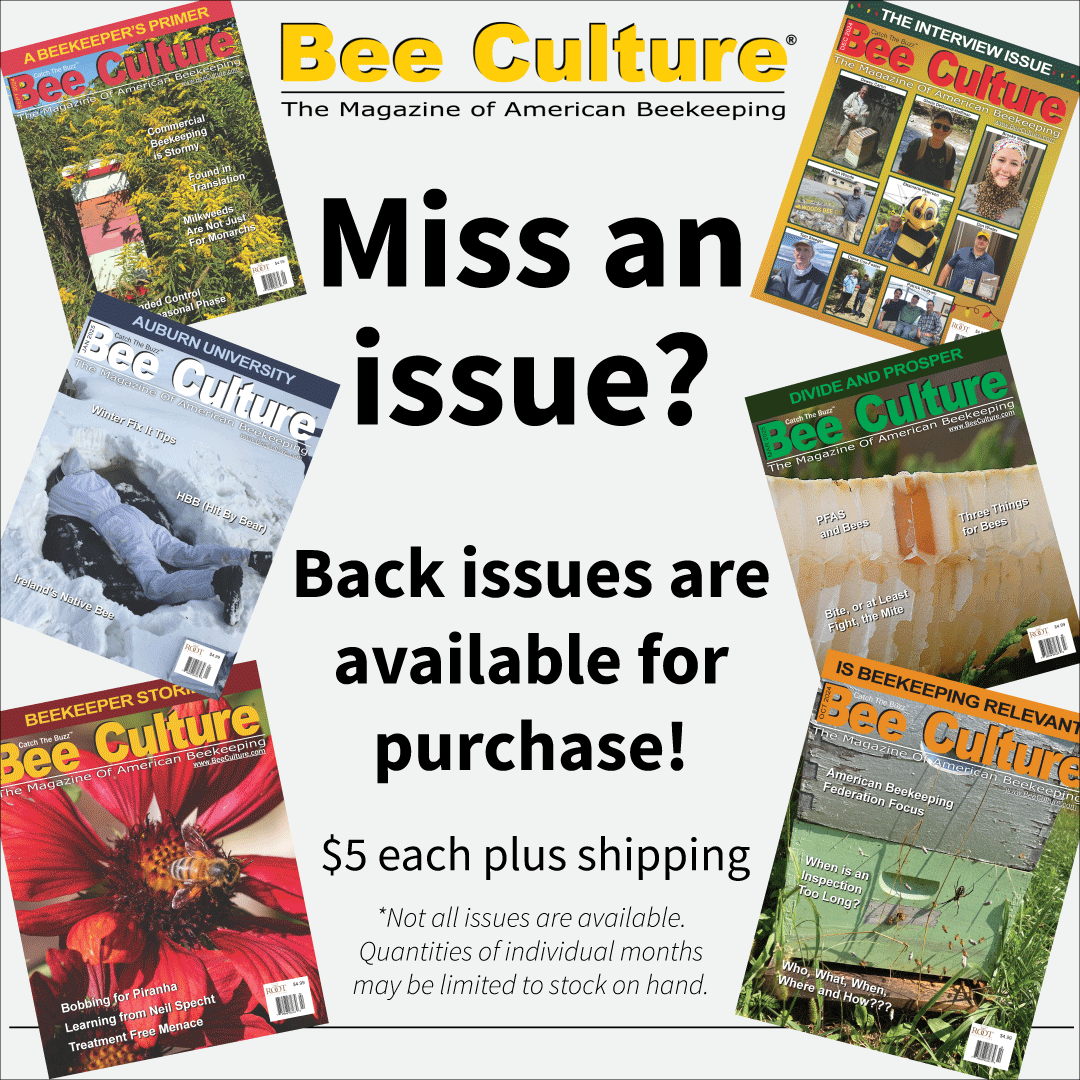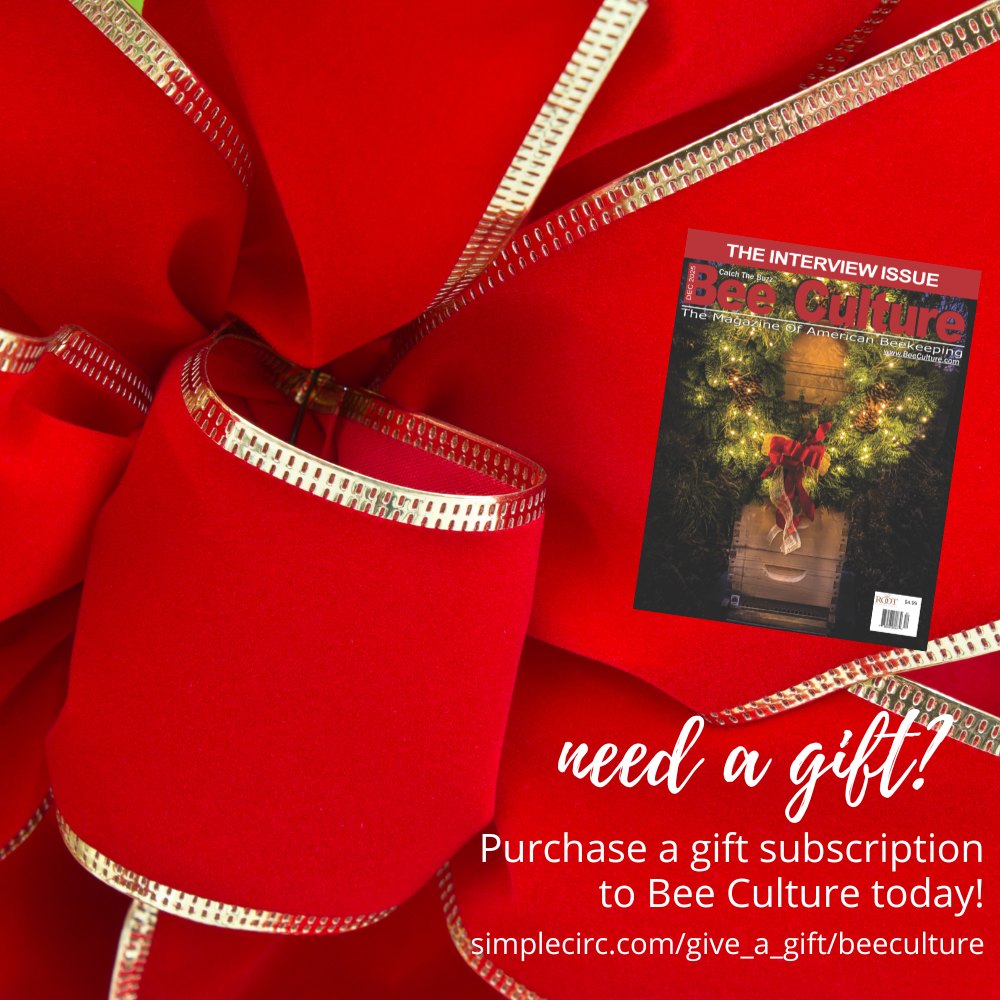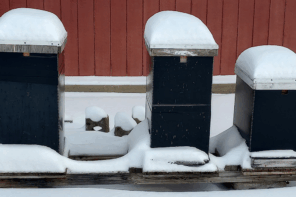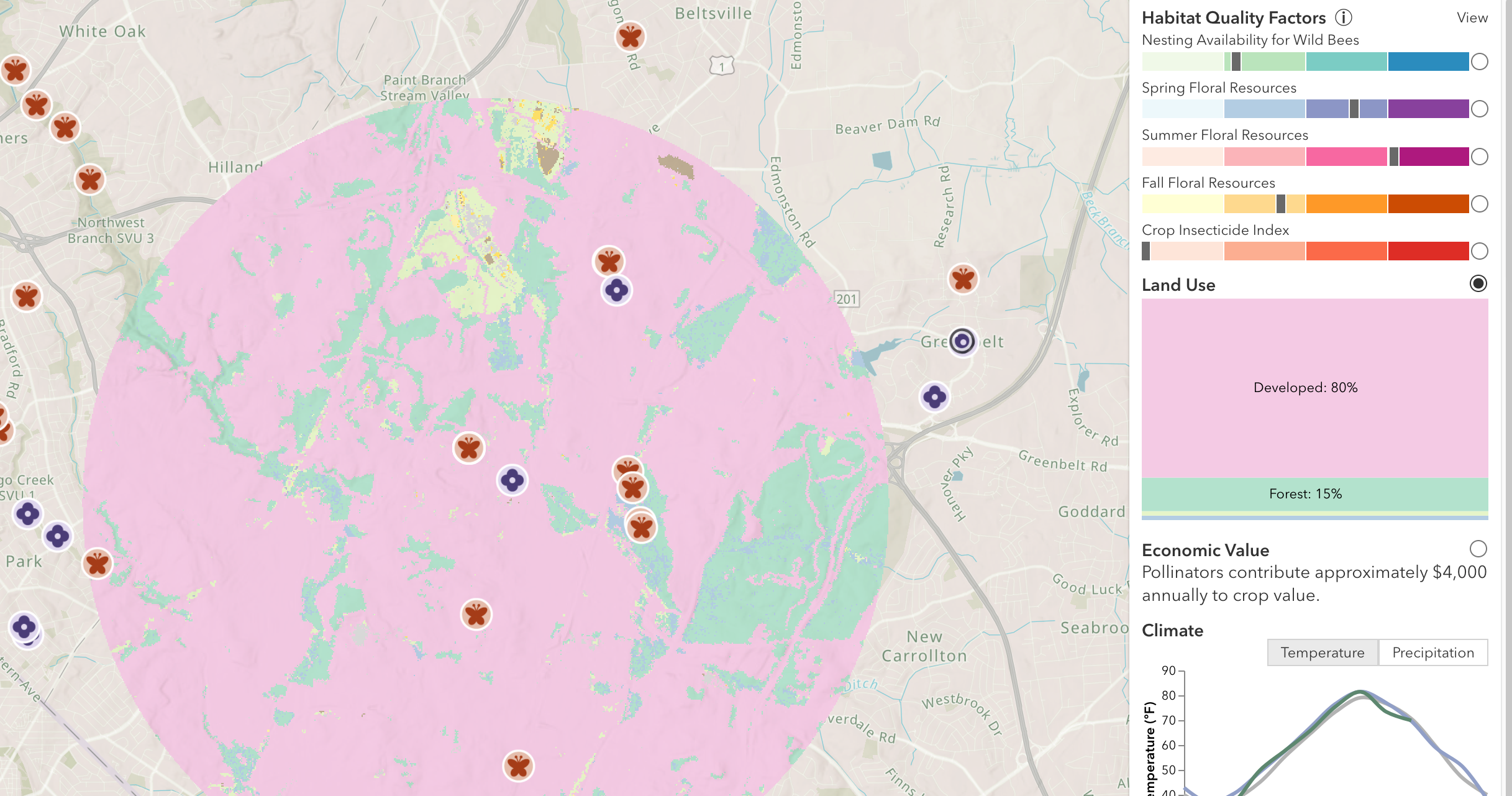By: Ann Harman
This article originally appeared in the Summer 2017 issue of BEEKeeping Your First Three Years
My mentor is coming at 2 PM today. We could not examine the colonies yesterday because it was cool and rainy. But today it’s bright sun, about 75° F and almost no wind. My two colonies are a bit different. One was started from a 5-frame nuc that was put into a 10-frame medium brood chamber. The other one was started from a package put in a 10-frame medium because I got my order for nucs in to my local club too late. Only one nuc was left. Both colonies do have Italian queens. The last inspection we did was two weeks ago. Both hives have syrup feeders on so that good comb can be drawn. My mentor is always on time so I will have my well-packed smoker lit and ready to use.
My mentor has arrived! So my first question is what are we going to do today? Uh oh. My task was to review my records of the last inspection. If I had done that I would know what to look for today. So we are off to a slow start while I read those records. My mentor especially emphasized reviewing those because the two colonies got off to quite a different start. The one started from a package did not have any comb so the bees had to draw comb before the queen could start laying eggs. That is why the package colony is behind the nuc colony in numbers of bees.
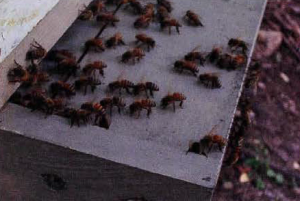 The nuc colony had a good population of bees of all ages. This colony also had to draw comb on the other five frames but with its larger population it had a head start. Perhaps there will be enough drawn comb to add another medium brood chamber. I hope there is at least 90% drawn today. Perhaps this colony can expand enough into a total of three medium brood chambers and possibly make some surplus honey this year. I understand the package colony may have to be fed 1:1 sugar syrup for a much longer time than the nuc colony to achieve a sufficient number of bees for Wintertime.
The nuc colony had a good population of bees of all ages. This colony also had to draw comb on the other five frames but with its larger population it had a head start. Perhaps there will be enough drawn comb to add another medium brood chamber. I hope there is at least 90% drawn today. Perhaps this colony can expand enough into a total of three medium brood chambers and possibly make some surplus honey this year. I understand the package colony may have to be fed 1:1 sugar syrup for a much longer time than the nuc colony to achieve a sufficient number of bees for Wintertime.
We finished reviewing the records from last time and the smoker is still puffing plenty of smoke. Are we going to watch at the entrance before opening the hives? We did that last time and I know my mentor has suggested watching activities at the entrance not only before opening a hive but also at other times. Both colonies are certainly very active with bees bumping into each other while going in and out. Lots of pollen is coming in but I see one color is different than the last time l watched. I now know that means a new source of forage has blossoms. As I look at the flight paths in the air most of the bees are headed in the same direction. Only a small number have chosen a different flight path this time.
The package colony definitely has more foragers now than at the last inspection. And it is possible there are more guard bees inside the entrance. It is a bit hard to tell because of all the flight activity. The last time we inspected was in mid-morning. Now I can see -and hear!- a few drones returning to the hives. They have a definitely different buzz. I wonder if they are returning from a Drone Congregating Area, a DCA, searching for a virgin queen.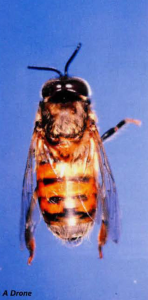
It’s time to open the hives. I think it would be a good idea to open the nuc colony first. Some puffs of smoke at the entrance and a bit under the outer cover. My mentor has guided me into waiting a minute before removing the covers. This time gives the bees an opportunity to fill up on honey and become calm. Covers off. WOW! l’ve never seen so many bees before in my life! More smoke! Lots of smoke! Am I giving these bees too much smoke? My mentor is telling me to stop smoking the bees. In fact they do seem to be a bit confused. Now what? My mentor said that I acted too quickly. I needed to wait to see if the bees were staying in the hive or if lots of them were coming out of the hive. I just need to observe their behavior before taking action. A very few colonies become overly defensive. These Italian stock bees are generally calm and respond to a sensible amount of smoke. However if my bees were African bees then lots of smoke may be essential.
Now that these bees have calmed down I can remove some frames to see how well they have drawn comb and if they are ready for another medium brood chamber. I can look at a frame of brood to examine the pattern and to look at pollen and honey stores. The brood pattern shows me that the queen is performing very well. (The number of bees in the hive actually told me about the queen’s efforts if I had just not panicked when I saw so many.) I did bring the next brood chamber with me to the beeyard. Yes, my mentor told me to think about what you need to bring to the apiary to avoid running back and forth from the storage area to the hives. The hive should be open no more time than necessary. Since the weather is ideal and the forage seems plentiful, the colony is ready for the second brood chamber.
I am so pleased with the progress of the nuc hive that I think I will order a queen excluder and another medium with 10 frames just in case I can harvest some honey this year. My mentor has cautioned me to learn the plants in my area that can produce surplus honey and their blooming time. Well, if I miss this year, I’ll be ready next year.
The nuc hive is now closed. Next I will open up the package colony. This time I will be sensible about smoke. The bees are calm and have a quiet buzz, quite different from the sound of the nuc colony during the heavy smoking. Is this the sound a normal, undisturbed colony makes? My mentor assures me that it is. I will remember this quiet buzz and also the loud, complaining buzz during the over-smoking of the nuc colony. My mentor reminded me to listen to the bees’ sounds. Then I will be able to tell if I have really disturbed them during inspection and if they return to being quiet and calm. I hope that I can learn the sound a queenless colony makes . That particular sound alerts the beekeeper when opening a hive that the colony has lost its queen. The sound is not done to tell the beekeeper – the beekeeper just notices it’s a characteristic of queenless colonies. My mentor promised to let me know when be finds one so that l can learn more of the different sounds a colony can make.
The package colony has made good progress in the two weeks since the last inspection . The weather has been good for foraging. Since the comb is 90% drawn, the second medium brood chamber can be put on. The feeder will be refilled with 1:1 sugar syrup. The queen is busy laying eggs. No problems can be seen.
Since these two colonies are so new and have plenty of space in the hive as well as young queens, swarming would not be expected. However my mentor did point out where to look for both swarm cells and supersedure cells. That is something to keep in mind, especially for next year.
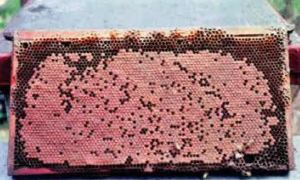 As the colonies grow I am going to do either a sugar shake or alcohol shake to monitor Varroa. My mentor offered to help with my first one. I’ve never scooped up bees into a jar before. It’s supposed to be quite easy but I also need help to make certain I can identify the Varroa shaken loose. The small hive beetle (shb) could also be a problem . I thought I saw one on the inner cover but it turned out to be a harmless beetle much larger than a small hive beetle. However I will have to watch for the real shb.
As the colonies grow I am going to do either a sugar shake or alcohol shake to monitor Varroa. My mentor offered to help with my first one. I’ve never scooped up bees into a jar before. It’s supposed to be quite easy but I also need help to make certain I can identify the Varroa shaken loose. The small hive beetle (shb) could also be a problem . I thought I saw one on the inner cover but it turned out to be a harmless beetle much larger than a small hive beetle. However I will have to watch for the real shb.
So far I have recorded the observations made today. I am learning how important records are. It really does not matter how you keep them but you do need to review what you did and what you found at he previous inspection. Today some beekeepers write them in a notebook; others text or phone them to a computer. One problem with electronic equipment in the beeyard is that gloves or fingers can get quite sticky with wax and propolis. These are not easily removed. It is best to try several ways of keeping records to find one that you will continue using. Keep it simple, easy to use. If keeping records is made too time-consuming that project will be abandoned, especially if you increase your number of hives.
My mentor seemed a bit surprised when I mentioned ordering a queen excluder and another medium as a honey super for the nuc colony this year. ls this an appropriate time of year to get surplus honey? My mentor reminded me that the United States is a big country. True. Some live in the cold northern states, many live in a large temperate area. Then there is the South, warm and even subtropical in places. Deserts, mountains, prairies. I have to understand my climate and also my weather. Those control both bee activities and types of plants. I used the USDA Plant Hardiness Zone Map to determine the growing temperatures in my area. Open the website and put in your Zip Code.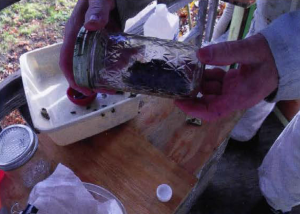
I also found out that honey crops depend on the type of area – whether rural, suburban or urban. Rural beekeepers are concerned about farmers and the use of pesticides, herbicides and fungicides on crops. Forage could be contaminated. Suburban beekeepers have to cope with too much green lawn with the same contaminants as in rural areas. Urban beekeepers worry about having enough plants for forage during the beekeeping season. I think I’ll take a drive around the roads during beekeeping season to see what my bees will find for pollen and nectar and the possibility of contaminants.
Next I was reminded that I had to be a Weather Watcher. If I put on a honey super in the middle of a drought I might get very little honey. The bees need it for themselves first. Drought reduces nectar production. Lack of sufficient rain also means the plants and their flowers are smaller than if rainfall were normal.
Just the opposite of drought is the overabundance of rain. Endless days of rain keep my bees inside the hive. They will have to eat all available stored honey to stay alive and to raise bees. The queen could be laying fewer eggs but the adult population may be quite large and does need to eat. Wind is another weather factor. Bees really cannot fly with wind about 12 to 15 miles per hour or more. An approaching thunderstorm will send them back to their hive, cutting short their foraging day.
I now realize that bees are dependent on their environment and on my beekeeping skills. My mentor will help me develop those skills.

